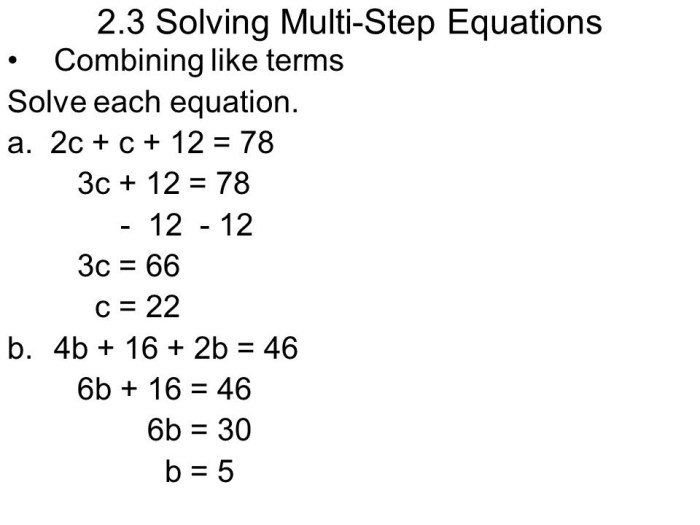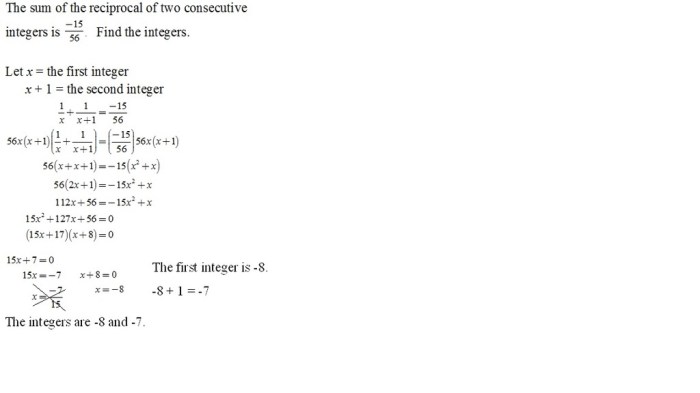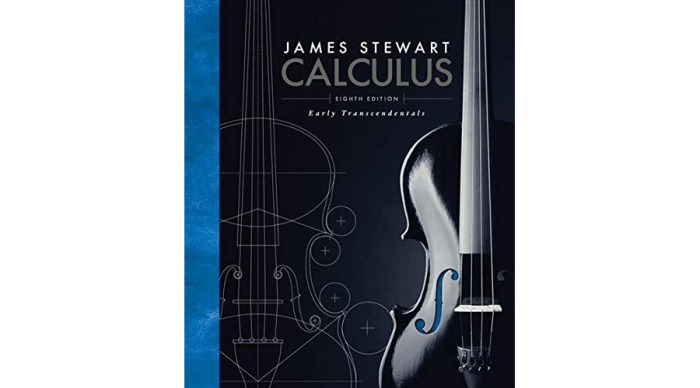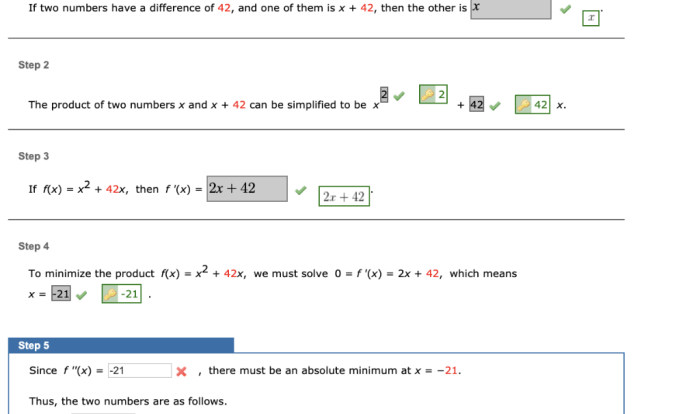Quiz 2 multi step equations – Embark on a journey into the realm of Quiz 2 Multi-Step Equations, where intricate equations unravel their secrets, revealing the hidden connections between numbers and the world around us.
Delve into the depths of this fascinating topic, where we’ll unravel the complexities of multi-step equations, conquer the art of isolating variables, and explore the practical applications that make these equations indispensable tools in our daily lives.
Definition of Multi-Step Equations
Multi-step equations are mathematical equations that require more than one step to solve. They typically involve multiple operations, such as addition, subtraction, multiplication, and division, and may also include parentheses and exponents.
Quiz 2 multi step equations can be a bit tricky, but if you take it one step at a time, you’ll be fine. For example, if the pKa of HCHO2 is 3.74 , you can use that to find the concentration of H+ in a solution of HCHO2.
Just remember to keep track of your units and you’ll be good to go. Good luck with quiz 2 multi step equations!
Examples of multi-step equations include:
- 2x + 5 = 15
- (x – 3) 2= 25
- 3(y – 2) – 5 = 10
Solving Multi-Step Equations: Quiz 2 Multi Step Equations

Solving multi-step equations involves a series of logical steps to isolate the variable and find its value. It requires careful application of algebraic operations, understanding of equation properties, and systematic thinking.
Isolating Variables
To isolate a variable, we must perform inverse operations on both sides of the equation that cancel out the operations involving that variable. For example, to isolate xin the equation 2x + 5 = 13, we subtract 5 from both sides and then divide both sides by 2.
Some common inverse operations include:
- Adding and subtracting the same value
- Multiplying and dividing by the same non-zero value
- Raising both sides to the same positive exponent
- Taking the square root or cube root of both sides (if applicable)
Common Errors
Some common errors made when solving multi-step equations include:
- Performing operations on only one side of the equation
- Using incorrect inverse operations
- Dividing by zero
- Assuming that equations are equivalent even when they are not (e.g., multiplying or dividing both sides by a negative value without changing the inequality sign)
By avoiding these errors and following the steps for solving multi-step equations, we can accurately determine the value of the variable.
Applications of Multi-Step Equations

Multi-step equations find widespread applications in various real-world scenarios. They empower us to model and solve problems in diverse fields, ranging from finance and engineering to science and everyday life.
Problem Solving in Different Fields
Multi-step equations are essential for solving problems in:
- Finance:Calculating interest rates, loan payments, and investment returns.
- Engineering:Designing structures, analyzing forces, and optimizing systems.
- Science:Modeling chemical reactions, predicting motion, and understanding physical phenomena.
- Everyday Life:Budgeting, recipe adjustments, and planning travel routes.
Examples of Applications
Here are some specific examples of how multi-step equations are used in practice:
| Field | Problem | Equation |
|---|---|---|
| Finance | Calculating loan payments | P = (r
|
| Engineering | Designing a bridge | F = m
|
| Science | Predicting projectile motion | h =
|
| Everyday Life | Adjusting a recipe | New Quantity = Original Quantity
|
Practice and Assessment

Reinforcing the concept of multi-step equations requires a well-structured approach that provides ample opportunities for practice and assessment. The practice problems should be designed in a way that allows students to progress from simpler equations to more complex ones, building their confidence and understanding gradually.
Practice Problems, Quiz 2 multi step equations
The practice problems can be organized into different levels of difficulty, starting with basic one-step equations and gradually progressing to multi-step equations involving multiple operations and variables.
- Level 1:Solve one-step equations involving addition, subtraction, multiplication, or division.
- Level 2:Solve two-step equations involving two operations, such as addition followed by multiplication or subtraction followed by division.
- Level 3:Solve three-step equations involving three or more operations, including parentheses or variables on both sides of the equation.
- Level 4:Solve multi-step equations involving multiple variables and operations, requiring the use of algebraic techniques such as substitution or elimination.
Assessment
The assessment section should evaluate students’ understanding of multi-step equations and their ability to apply the concepts they have learned. The assessment can include a mix of:
- Short answer questions where students are asked to solve specific multi-step equations.
- Word problems that require students to translate real-world situations into multi-step equations and solve them.
- Open-ended questions that assess students’ understanding of the underlying concepts and their ability to explain their reasoning.
Visual Aids and Illustrations

Visual aids and illustrations can greatly enhance the learning experience for students by making abstract concepts more concrete and easier to understand. In the context of multi-step equations, visual aids can help students visualize the process of solving equations and identify the steps involved.
Some effective visual aids for teaching multi-step equations include:
Diagrams
Diagrams can be used to represent the steps involved in solving an equation. For example, a flowchart can show the order of operations that need to be performed, or a Venn diagram can be used to represent the solution set of an equation.
Images
Images can be used to illustrate the concepts involved in solving multi-step equations. For example, an image of a balance scale can be used to demonstrate the concept of equality, or an image of a number line can be used to show the solution set of an equation.
Animations
Animations can be used to demonstrate the process of solving equations in a dynamic way. For example, an animation can show how the solution set of an equation changes as the coefficients of the variables are changed.
A gallery of visual aids can be a valuable resource for students, providing them with a variety of ways to learn about and practice solving multi-step equations.
Essential FAQs
What are multi-step equations?
Multi-step equations are equations that require more than one step to solve, involving operations such as addition, subtraction, multiplication, and division.
How do I isolate a variable in a multi-step equation?
To isolate a variable, perform inverse operations on both sides of the equation until the variable is alone on one side.
What are common errors when solving multi-step equations?
Common errors include incorrect order of operations, forgetting to distribute, and making algebraic mistakes.
Where are multi-step equations used in real life?
Multi-step equations are used in various fields, such as physics, engineering, finance, and everyday problem-solving.

